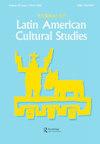Photographic Assembly in Post-Dictatorial Argentina and Uruguay
IF 0.3
4区 社会学
Q4 CULTURAL STUDIES
引用次数: 0
Abstract
In two works of photographic assemblage, portraits of those disappeared under the last Argentine and Uruguayan dictatorships appeared on the walls of Montevideo and Buenos Aires. In 1984 Buenos Aires, the collective C.A.Pa.Ta.Co. produced afiches participativos in the months following the country’s return to democracy. For this project, the public was invited to colour in black-and-white photocopied portraits installed around the Plaza de Mayo. In 2008, Juan Angel Urruzola installed enormous portraits of the disappeared throughout the streets of Montevideo in a visual campaign that coincided with a referendum on the Law of Expiry in Uruguay. Both projects represent acts of political and artistic assembling shaped by precariousness, a condition of simultaneous endurance and fragility. This article contributes to contemporary debates surrounding the constitution of public space, community, and communication in post-dictatorial Southern Cone with a focus on the encounter between the image and an emergent public. Bringing together Deleuze and Guattari’s philosophy of assemblage, Judith Butler’s reflections on political assembly, and Claire Bishop’s discussion of antagonism in participatory art, I argue that a precarious quality of assembly enables collective creation, dissent, and exchange within the space of the photographic assemblage.后独裁时期的阿根廷和乌拉圭的摄影大会
在两幅摄影作品中,蒙得维的亚和布宜诺斯艾利斯的墙上出现了在上一届阿根廷和乌拉圭独裁统治下消失的人的肖像。1984年,布宜诺斯艾利斯恢复民主后的几个月里,集体的C.A.Pa.Ta.Co培养了狂热的参与者。在这个项目中,公众被邀请在五月广场周围安装黑白影印肖像。2008年,胡安·安赫尔·乌鲁佐拉在蒙得维的亚的街道上为失踪者安装了巨大的肖像,这是一场视觉运动,恰逢乌拉圭就到期法举行全民公投。这两个项目都代表了由不稳定塑造的政治和艺术集会行为,这是一种同时存在耐力和脆弱性的条件。这篇文章有助于围绕后独裁时代的南锥体公共空间、社区和沟通的构成展开当代辩论,重点关注形象与新兴公众之间的相遇。将德勒兹和瓜塔里的集会哲学、朱迪斯·巴特勒对政治集会的反思以及克莱尔·毕晓普对参与式艺术中对抗性的讨论结合在一起,我认为,不稳定的集会质量能够在摄影集会的空间内实现集体创作、异议和交流。
本文章由计算机程序翻译,如有差异,请以英文原文为准。
求助全文
约1分钟内获得全文
求助全文

 求助内容:
求助内容: 应助结果提醒方式:
应助结果提醒方式:


